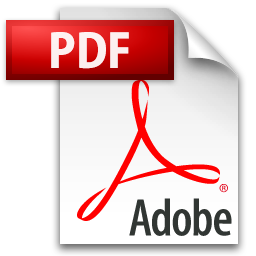| S.No. |
Title |
Page No. |
Download |
| 1 |
Title : Geochemical Investigation of some rocks in Yelwa area of Muri-Lau sub-Basin, Northern Benue Trough, Northeast Nigeria
Authors H. I. Kamale, J. M. El-Nafaty, U. A. Usman, A. A. Abakar
Abstract: Geological mapping of the Yelwa area revealed that the area is composed of sedimentary and volcanic rocks. The sedimentary rocks are categorized into Bima, Yolde and Dukul Formations whereas the volcanic rocks consist of basalt and phonolite. The limestone unit of the Dukul Formation host recrystallized calcite at six different locations. Geochemically the limestone is enriched in lime (CaO) 47.78 wt% with depletion in all other oxides such as silica (Si2O) 8.02 wt%, alumina (Al2O3) 2.64, total iron (Fe2O3) 2.66 wt%, magnesia (MgO) 0.72 wt%, soda (Na2O) and potash (K2O) 0.26 wt%. The high lime (CaO) content coupled with low magnesia (MgO) content indicate that the rock is limestone with no dolostone and can be utilized for the production of Portland cement. The phonolites have average values of silica 58.65 wt%, alumina 19.91 wt%, total iron 3.36 wt%, soda 6.76 wt% and potash 5.46 wt% suggesting intermediate rock on account of silica saturation. The plots of major and trace elements strongly indicate that the rocks are phonolitic and have originated from a calc-alkaline magma. This study showed that the limestone from the Yelwa area of Muri-Lau sub-Basin in Northern Benue Trough can be used for the production of Portland cement.
|
1-8 |
 |
| 2 |
Title : Hydrochemical Characteristic and Ground Water Quality of the Aquifers in area around Aldamer Town-River Nile Sate – Central Sudan
Authors Sadam. H.M.A.Eltayib
Abstract: This paper emphasized on the hydrochemistry of ground water as it is vulnerable resources to many environmental risks and is essential to sustainable development. The main geological units in the study area are Pre-Cambrian Basement Complex, Upper Cretaceous sedimentary formation, Oligocene Hudi Chert and Quaternary superficial deposit. There are two types of aquifers in the study area namely; the alluvial aquifer and Cretaceous sedimentary aquifers. The thickness of the two aquifers varies between the 3 - 30 m (for the upper aquifer) and 13 – 55 m (for the lower aquifer). The upper aquifer is semi confined. The field collected groundwater samples were analyzed for the major ion chemistry, using the standard laboratory methods. Arc GIS software is used for spatial distribution of the chemical components. Most of chemical species concentration of groundwater are within the permissible limits of local and international (WHO) standards with the exception of small pockets at Aldamer town where high concentration were detected and some village in West of study area where salinity was recorded.
|
9-14 |
 |
| 3 |
Title : Fifth Addenda to Criticism of the Current Science in the World
Authors Pejman Malekinejad
Abstract: This article is as a proof to my previous papers [1-7] which confirms and approves them internationally. Also some scientific problems of Iran were discussed. Again it was concluded that Iran (and I) will not become anything in the science, I do not have any intelligence and (Iran and I) will not become anything in general. Therefore according to the principles of DEPRESSIVE REALISM, I must always be happy. It was suggested that the only way for the general advancement of Iran is to make Iran as a state of USA officially.
|
15-17 |
 |
| 4 |
Title : Study of Land Use and Land Cover change of Jaipur through Remote Sensing and GIS Techniques
Authors Surendra Rose, Sarina Kalia
Abstract: Land Use and Land Cover Change (LULC) is a result of human activities spanning over five decades and is among the main challenges of 21st century. Land-use and land-cover represent the change in physical, ecological and socio- economic parameters of the land. Humans have constantly modified it in various ways leading to serious implications on food security and environment. The study of Land Use change is crucial for better utilization of sustainable development. The present study deals with the spatial analysis of land-use and land-cover change in Jaipur using Remote-sensing and GIS techniques. This paper analyzes the changes over a period from 2001 to 2018. Studying LULC is important to understand the proper land use planning for sustainable development of the Jaipur. The changes in every class were studied using matrix analysis of all classes of satellite image data. The study reveals the pattern of high change in built-up area and fallow land.
|
18-23 |
 |
| 5 |
Title : Management and control of desertification
Authors Anoop Kumar
Abstract: There are several agro-forestry systems for different locations of semi-arid areas. In alley cropping, the perennial component is grown as hedge rows largely on contour lines, and the annual crops in alleys. The pruning from the tree component can be used as fodder during drought years or applied in the cropped field as mulch cum manure. Although the tree component competes with the annual crop for moisture and nutrients leading to decreased crop yields in drought years, the fodder from the tree supports the livestock. Moreover, by cutting the hedge rows, competition with the crop can be minimised. More studies on geometry and distance between edge and crop strips to minimise the competition are warranted.
|
24-25 |
 |
